The Tamborrada
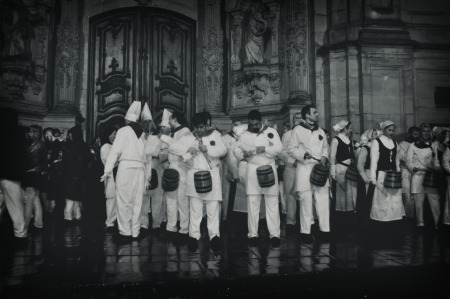
January 20. The favorite day of nearly every resident of San Sebastián. A day that nearly always portends cold, rain and discomfort. It's the Day of San Sebastián.
Imagine an entire town turning up at the main square at midnight. The mayor sits above them all, flags are flying, bright spotlights are shining, and a group of middle-aged men are playing the drums. Then imagine that for the next twenty-four hours, the sound of drumming fills the streets of the entire city. Sleeping is done at random times throughout the day...but not during normal sleeping hours. It's the party no one wants to miss.
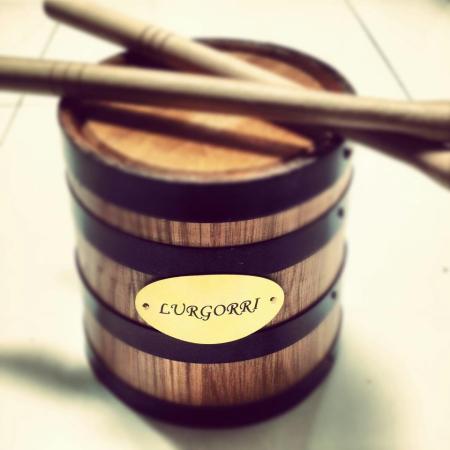
This year I had the pleasure of joining Lurgorri, a tamborrada that was founded in 1995, with 140 participants. This year marked a return to the scene for the group, and we did so in uniforms designed by a former mayor of San Sebastián, Ramón Labayen, styled after the Tercio de Gipuzkoa of 1703, with braids from the Casa Real del Reyno de Navarra. We paraded through the streets of the old part, which 22 other tamborradas also do throughout the day of the 20th. We were a fairly new tamborrada, which means we had to cede way to Donosti's most established tamborradas, like the Union Artesana (1870), Donosti Zarra (1896), and Euskal Billera (1906).
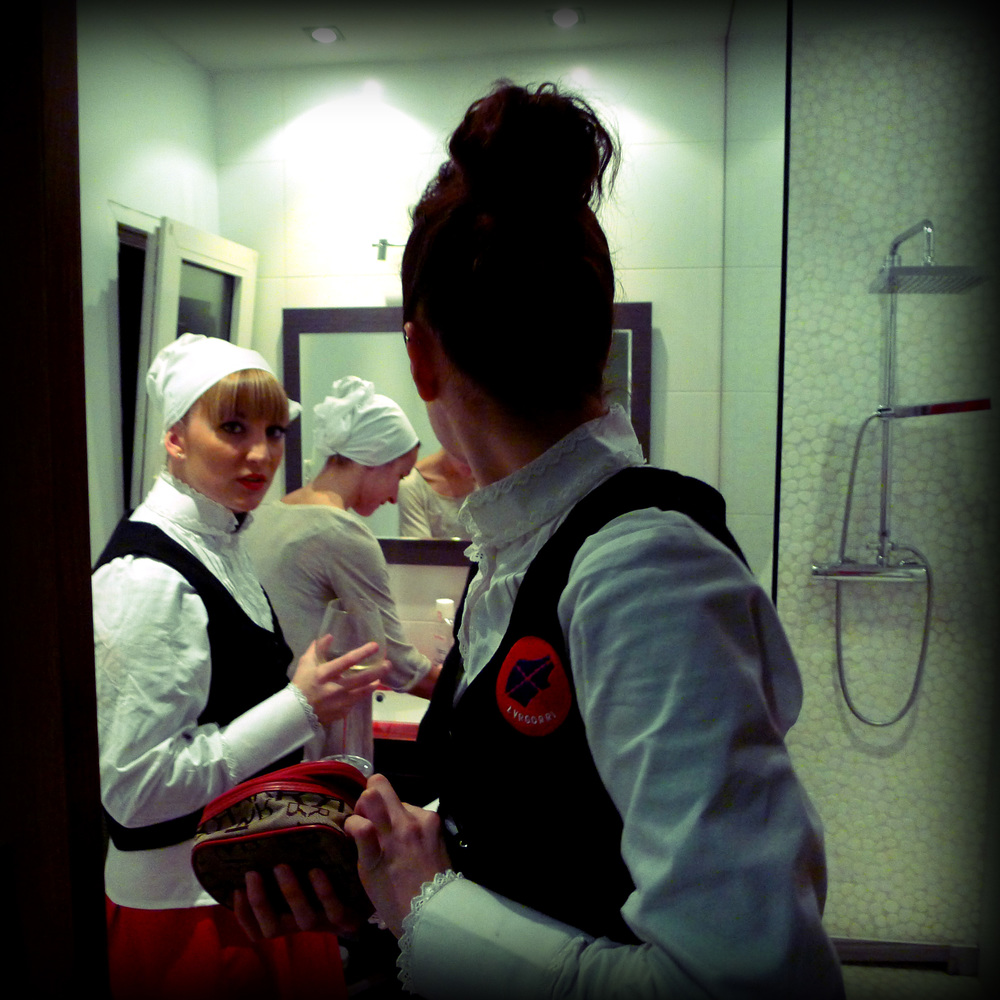
My friends and I played the part of aguadoras, or water girls. Our instruments were barriles, or barrels, along with the cooks of the group. Others played tambores, which are bigger drums. Gathering for a dinner before midnight is traditional, so we dined on foie, anchovies, ham, crusty bread, tuna salad, and wine. Then in a mad rush, five layers on: thermal, sweater, nike pullover, poncho and the traditional dress.
We reported to the batzoki a bit before midnight, when an interesting meteorological event happened. A cyclogenisis. Think hurricane, more or less. Wind, rain coming from all directions, total madness. So we played the first hour and were totally soaked, with only mini bottles of the Basque herbal liquor, patxaran to keep us warm.
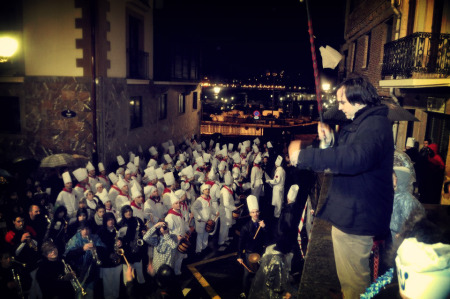
We would stop at each dining society, or sociedad, and play whichever songs they requested. Often, the directors of that sociedad's tamborrada would come out and take the baton and direct us themselves. There's no feeling like standing outside of Gaztelubide, with the church of Santa María shining to the side, and playing the March of San Sebastián. No feeling.
Josu, our director or 'barril mayor' (see next week's 'A Copa Con...), filled me in a bit on the history of San Sebastián Day, which began in 1597. The Tamborrada as we know it began in 1836, when, purportedly the first groups went out dressed as chinamen, in a pre-Carnaval celebration. The dress of soldiers was not taken up until 1881. Since that date, though, the tradition has gone on strong, and it doesn't seem to be ending anytime soon.
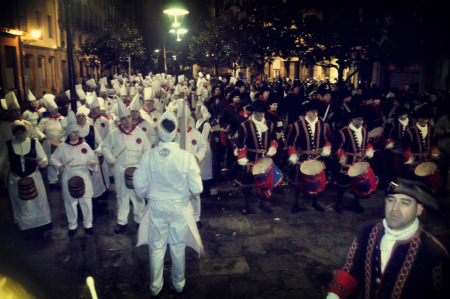
*note, in this post most photos are not my own. that's what happens when a bizarre weather events meets a bizarre patxaran-filled tradition.
